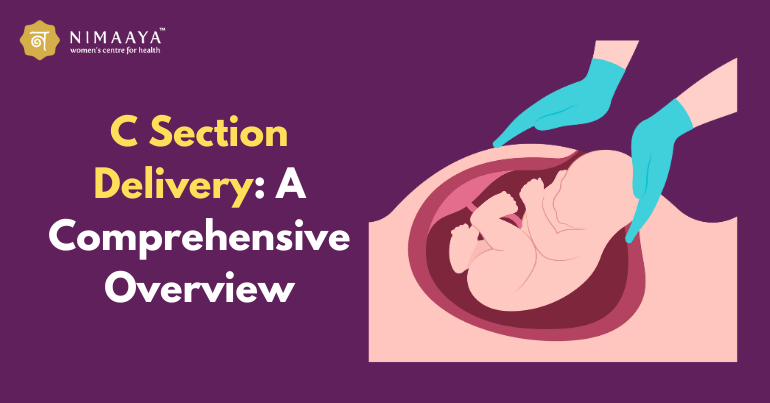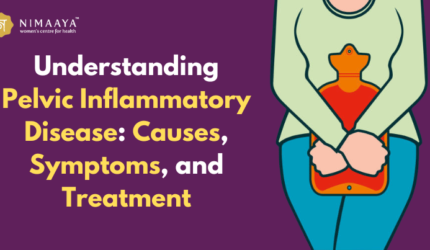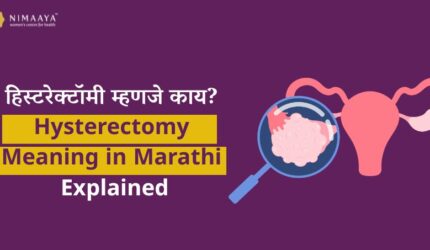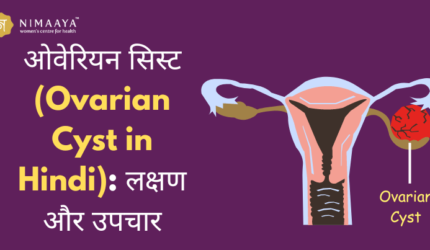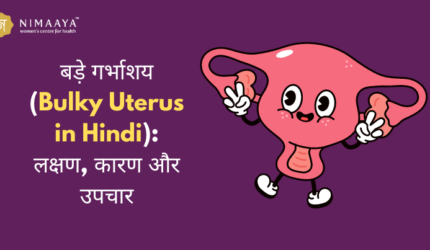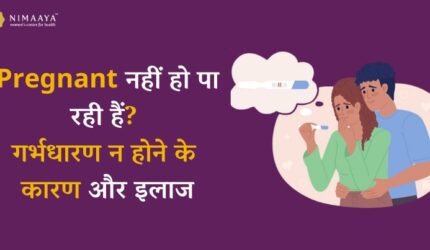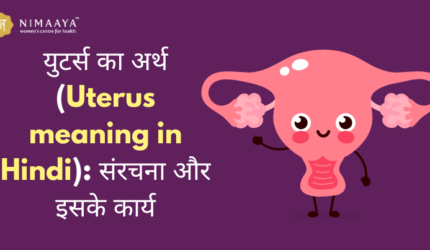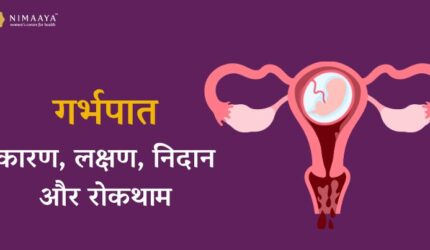The C-section, a familiar term for Cesarean section, is a surgery for baby delivery. It involves cuts in the abdomen and uterus. Sometimes, the operation is scheduled, other times it’s due to a surprise problem. Understanding this type of delivery is crucial. It’s all about the what, why, how, healing, and possible worries. This stuff is vital for soon-to-be parents and healthcare workers. This comprehensive guide explores various aspects of C-section delivery, shedding light on its meaning, procedure, recovery time, and related issues such as back pain and healing.
What is a C-Section Delivery?
A C-section delivery, also known as cesarean delivery or cesarean section, involves the surgical removal of a baby from the mother’s womb. This procedure is typically planned if certain medical conditions are present, but it can also be performed as an emergency measure if complications arise during labor. While a C-section can be a safe and necessary procedure, it does come with potential risks and longer recovery time compared to vaginal delivery. Expectant mothers need to discuss their options and concerns with their healthcare provider to make an informed decision.
Indications for C-Section Delivery
There could be several causes for a C-section delivery.
- One such reason is Fetal Distress. If the baby’s heart rate is unusual, a C-section might be the way to go.
- Then there is the situation termed Breech Presentation. This is when the baby’s feet or buttocks, not the head, are positioned to come out first.
- If you have multiple babies inside you, such as twins or triplets, a C-section might be needed. It’s also real if the woman’s placenta obscures the cervix.
- This condition, called Placenta Previa, blocks the baby’s exit.
- If a woman has had a C-section before, she might end up needing another one. It lowers the risk of the uterus tearing.
- Maternal health problems such as high blood pressure, diabetes, or an infection might make a C-section necessary.
- Last but not least, complications during labour like a long labour or no progress could lead to a C-section.
Types of C-Section Deliveries
Two categories define C-section births: planned (elective) and emergency.
Planned C Section
A planned C-section is used beforehand, it’s used when traditional birth poses risks. Causes for a planned C-section span from a breech positioning, multiple babies, to a past C-section.
Emergency C Section
An emergency C-section handles sudden complications arising during childbirth. This may arise from issues such as baby distress, stalled labour, or unanticipated problems.
The Procedure
Preoperative Preparation
Before the surgery, the mother will undergo several preparations:
- Fasting: The mother will be asked to fast for several hours before the surgery.
- IV Line: An intravenous (IV) line will be inserted to administer fluids and medications.
- Anaesthesia: Regional anaesthesia, such as an epidural or spinal block, is typically used to numb the lower half of the body. In rare cases, general anaesthesia may be necessary.
- Catheter: A urinary catheter is inserted to empty the bladder during the procedure.
Surgical Process
- Incision: The surgeon makes a horizontal or vertical incision in the lower abdomen and another incision in the uterus.
- Delivery: The baby is carefully delivered through the incisions. The umbilical cord is clamped and cut.
- Placenta Removal: The placenta is removed from the uterus.
- Closure: The incisions in the uterus and abdomen are closed with stitches or staples.
Postoperative Care and Healing
Immediate Postoperative Care
Right after surgery, mom’s well-being is keenly checked in a recovery space. Her vital stats are observed carefully, and pain is managed. Usually, the newborn can be cuddled and fed soon after coming into the world. The medical team will also monitor for any signs of complications or adverse reactions to anesthesia. Once stable, mom and baby will be transferred to a postpartum room for further recovery and care.
Hospital Stay
A typical stay at the hospital after a C-section takes around 3-4 days. In this period, the mom gets help to manage the pain, guidance on breastfeeding, and tips to take care of the cut. During this time, the medical team will also ensure that both mom and baby are healing properly and provide any necessary support or interventions. New moms need to rest and recover fully before returning home to continue their postpartum care.
C Section Healing Time
Bouncing back from a C-section needs patience, as each woman’s recovery differs. Generally, the healing timeline has several phases:
- Pain and Comfort in the First Few Days: Medication typically manages normal pain and discomfort.
- Motion: Easy movement, avoiding anything demanding, is advised d to ward off blood clots.
- Taking Care of the Incision: It’s key to keep the incision clean and dry, lowering infection risk.
- Activity in the First Few Weeks: A slow rise in activity helps, yet no heavy lifting or intense physical activities.
- Follow-Up Meeting: Usually, a check-up is set to examine the incision and overall health.
- Full Recovery in the Long Run: Total recovery may last 6-8 weeks. Some may feel numb or hypersensitive near the incision for a longer duration.
- Exercise: Starting with mild activities, exercise is gradually reintroduced and the difficulty level is amped up over time.
Potential Complications
While C-section deliveries are generally safe, they do carry certain risks and potential complications:
Short-Term Complications
- Infection: Infection at the incision site, uterus, or other pelvic organs.
- Hemorrhage: Excessive bleeding during or after the surgery.
- Blood Clots: Increased risk of blood clots in the legs or lungs.
- Reactions to Anesthesia: Allergic reactions or complications from anaesthesia.
Long-Term Complications
- Adhesions: Scar tissue that can cause pain or complications in future pregnancies.
- Increased Risk in Future Pregnancies: There is a higher risk of complications in future pregnancies, including uterine rupture or placenta previa.
- Chronic Pain: Some women experience chronic pain or discomfort around the incision site.
People Also Search: Baccha Kaise Hota Hai
Managing Back Pain After C-Section Delivery
Back pain is a common complaint following a C-section delivery. This can result from several factors, including the effects of anesthesia, changes in posture, and the physical strain of carrying and delivering a baby.
Causes of Back Pain
- Anesthesia Effects: The use of epidural or spinal anesthesia can cause temporary back pain.
- Postural Changes: Changes in posture during pregnancy and after delivery can lead to back strain.
- Physical Strain: The physical strain of caring for a newborn, including lifting and carrying, can contribute to back pain.
Relief and Management
- Pain Medication: Over-the-counter or prescription pain medications can help manage pain.
- Physical Therapy: Physical therapy exercises can strengthen the back and improve posture.
- Heat and Cold Therapy: Applying heat or cold packs can relieve pain and reduce inflammation.
- Proper Lifting Techniques: Proper lifting techniques and avoiding heavy lifting can prevent further strain.
Early Cesarean Section: Considerations and Implications
Early cesarean section refers to performing a C-section before labor begins, usually before 39 weeks of gestation. While sometimes medically necessary, it carries certain risks for the mother and the baby.
Risks of Early Cesarean Section
- Respiratory Issues: Babies born before 39 weeks are at higher risk of respiratory problems.
- Developmental Concerns: Early delivery can affect the baby’s development and increase the risk of complications.
- Maternal Complications: Increased risk of complications for the mother, including infection and bleeding.
Guidelines and Recommendations
- Medical Necessity: Early cesarean sections should only be performed when medically necessary.
- Timing: Elective cesarean sections should ideally be scheduled after 39 weeks of gestation to reduce risks.
The Role of Nimaaya IVF Center
Nimaaya IVF Center is a leading healthcare facility specializing in fertility treatments and comprehensive maternity care, including C-section deliveries. The center provides state-of-the-art medical services, compassionate care, and support for expectant mothers.
Services Offered
- Fertility Treatments: Advanced fertility treatments, including IVF, IUI, and egg donation.
- Prenatal Care: Comprehensive prenatal care to monitor the health of the mother and baby throughout pregnancy.
- Delivery Services: Skilled and experienced medical professionals to perform both vaginal and C-section deliveries.
- Postpartum Care: Support and care during the postpartum period, including lactation support and postpartum check-ups.
Read More: गर्भधारणेची लक्षणे (Pregnancy Symptoms in Marathi): प्रारंभिक संकेत
Patient-Centered Care
At Nimaaya IVF Center, we work with your unique needs and desires in mind. Offering tailored birth plans, understanding guidance, and a whole-person philosophy make up our maternity care. Our well-versed team at Nimaaya IVF Center makes an effort to provide a cosy, friendly space for each patient. We get the ups and downs of fertility treatments. That’s why, your journey matters to us and we’re there to back you up every stage.
Conclusion
A C-section is a key delivery method, helpful in safeguarding mom and baby under certain conditions. Knowing why a C-section happens, what the process entails, the recovery, and possible problems assist future moms in making smart choices about their birthing plans. With the assistance of specific health centers such as Nimaaya IVF Center, women obtain the needed care and advice during their pregnancy journey, leading to a secure and healthful childbirth experience. By understanding the reasons for a C-section and being informed about the procedure, women can feel more prepared and empowered during their pregnancy. Having access to specialized health centers like Nimaaya IVF Center ensures that mothers receive personalized care and support throughout their childbirth journey.

